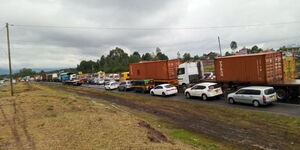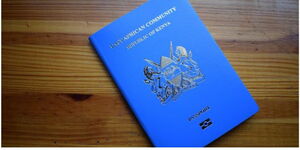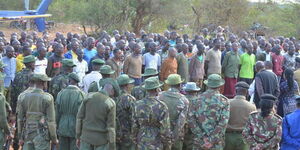The Kenya Meteorological Department (KMD) on Tuesday, April 4 warned motorists plying Nakuru-Nairobi Highway over slippery roads and poor visibility caused by heavy rains being experienced.
According to the weatherman, long rains in April would specifically affect the Kikuyu-Kinungi stretch on the Nakuru-Nairobi Highway.
"Slippery roads and poor visibility during rainstorms may also pose a danger to motorists and pedestrians, especially along the Kikuyu-Kinungi stretch on the Nakuru-Nairobi Highway," the weatherman stated.
"The public should, therefore, take utmost care during the rainy period to minimize accidents that could result from such weather conditions. Measures such as improving road signage and traffic management, as well as encouraging motorists to use headlights during low visibility, should be implemented to enhance safety on the roads," the outlook further advised.
Besides reduced visibility, KMD raised the alarm indicating that over 18 areas would experience storms.
According to the April forecast, occasional storms will likely be experienced in the Lake Victoria Basin, parts of southern Rift Valley and parts of the highlands west of Rift Valley.
Areas listed included Siaya, Kisumu, Homa Bay, Migori, Busia, Kisii, Nyamira, Kericho, Bomet, Kakamega, Nandi, Bungoma, Vihiga and Western parts of Narok counties.
Additionally, the weatherman stated that parts of the Central and South Rift region would also experience storms as rainfall is expected throughout April. The areas listed included Baringo, Laikipia, Nakuru, parts of Narok, West Pokot, Trans Nzoia, Uasin Gishu, and Elgeyo Marakwet counties.
Nairobi residents should also expect long-term average rainfall, which could cause floods in some estates.
Moreover, the Met Department warned Kenyans of vector-borne diseases such as malaria, dengue, and chikungunya in the Coastal and Lake Victoria regions.
According to the forecast, waterborne diseases are likely to occur, particularly in flooded areas and malnutrition-related diseases in semi-arid regions.
However, farmers were encouraged to take advantage of the rains to adopt proper farm management practices to maximise output. KMD advised farmers to implement soil conservation measures in areas prone to flooding.
The agency advocated for the establishment of early warning systems and evacuation plans to avert disaster.
"To mitigate the negative impacts of potential flooding, relevant authorities should put in place measures such as early warning systems and evacuation plans, and clear drainages in good time to avert flooding, especially in the urban areas," the statement read in part.
"The public is also advised to avoid driving or walking through flooded rivers or moving waters," it further warned.
The government was advised to implement measures such as water conservation practices and efficient irrigation methods to address potential water shortages.
"The rest of the country is expected to receive rainfall in April and May but remain generally dry in June. However, the Highlands East of the Rift Valley including Nairobi County and parts of the Southeastern lowlands may experience light rainfall in June as the cold season sets in," Kenya Meteorological Department further reported.












